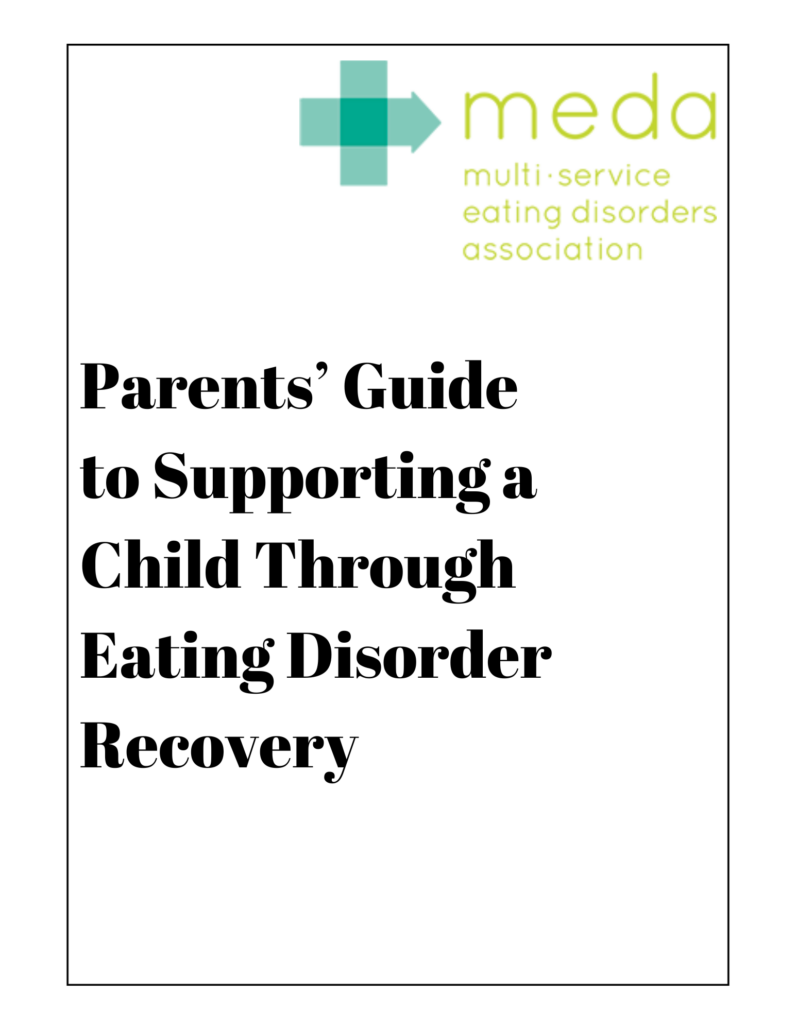
A Parent’s Guide to Support Their Child Through Eating Disorder Treatment
This brief guide strives to assist parents in supporting their child through treatment.

This brief guide strives to assist parents in supporting their child through treatment.

You are the best at knowing yourself and the degree to which your preoccupations with food and body image interfere with your life. If you answer yes to any of the questions in this questionnaire, it may be an indication that you may benefit from support around food, weight, and/or exercise.

Exercise and movement play a complicated role with eating disorders. While exercise certainly has its benefits, when taken to the extreme, it may be a sign of destructive coping. This resource discusses healing one’s relationship to compulsive exercise.
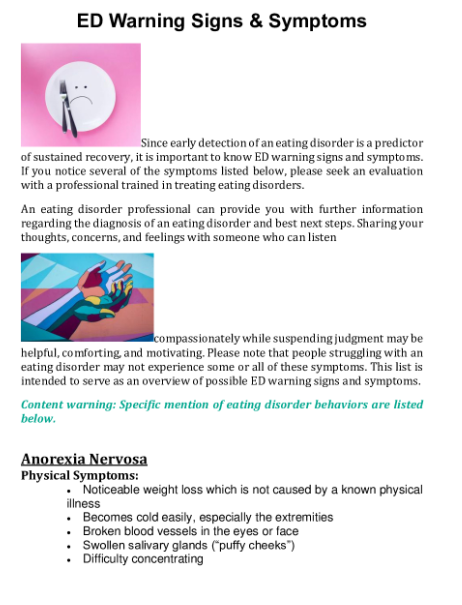
Since early detection of an eating disorder is a predictor of sustained recovery, it is important to know ED warning signs and symptoms. If you notice several of the symptoms listed below, please seek an evaluation with a professional trained in treating eating disorders.

Finding out your child has an eating disorder may be some of the most difficult news youve ever received. Eating disorders are clouded in misunderstanding and misinformation, and having one in the family can feel very isolating.
As you organize treatment and recovery for your child, here are five things you can do to set yourself up for success.
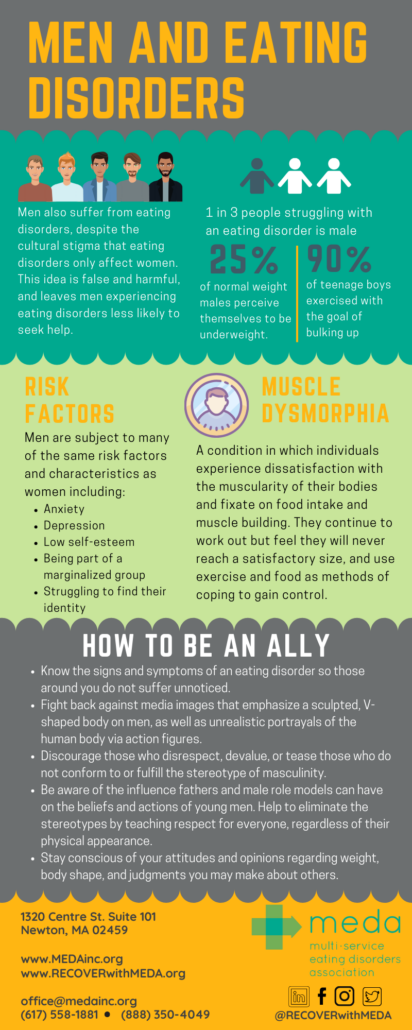
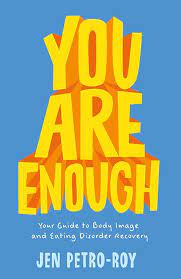
This nonfiction self-help book for young readers with disordered eating and body image problems delivers real talk about eating disorders and body image, provides tools and information for recovery, and offers suggestions for dealing with the media messages that contribute so much to disordered eating.

The Jots of Becoming captures the story of my recovery from my Eating Disorder using journal entries containing insights and messages of hope. As someone who grew up involved in the Jewish community, the Jots of Becoming features narratives on recovering while Jewish.
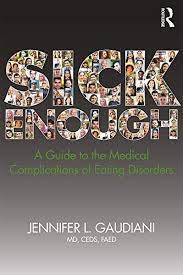
Sick Enough offers patients, their families, and clinicians a comprehensive, accessible review of the medical issues that arise from eating disorders by bringing relatable case presentations and a scientifically sound, engaging style to the topic. Using metaphor and patient-centered language, Dr. Gaudiani aims to improve medical diagnosis and treatment, motivate recovery, and validate the lived experiences of individuals of all body shapes and sizes, while firmly rejecting dieting culture.
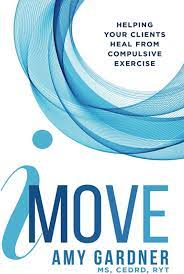
Pulling from her owen experience with compulsive exercise and from her work with many clients, Amy Gardner shows you how to help your clients move out of a compulsive exercise pattern.
Shira Rose (she/her) is an eating disorder therapist, LCSW who operates from a fat positive + Health At Every Size framework
Meghan McGann, RD (she/her) is an anti-diet dietitian who advocates for inclusive care.
Nic McDermid (she/her) is a fierce activist, feminist, advocate and content creator whose work focuses on disrupting the dominant discourse around weight and bodies, and challenging the ways in which certain types of bodies are both idolised and idealised.
Schuyler Bailar (he/him) is the first trans D1 NCAA men’s athlete. He is also in recovery from an eating disorder and self-harm.
A national non-profit organization that provides resources and opportunities for individuals seeking treatment and recovery services.
Wednesdae Reim Ifrach (They/Them) REAT, ATR-BC, ATCS, LPC, NCC, CLAT, LCMHC, LPCC is Fat, Trans/Non-Binary, Queer, Disabled. They hold a master’s degree in art therapy and their specialities include Their current specialties include gender affirming care, fat and body activism, intersectional social justice, complex trauma and eating disorder treatment.
SJ (they/them) is a Coach, Consultant, And Soon To Be Social Worker Focused On Fat Liberation Based In Anti-Racism And Anti-Colonialism.
Allyson Inez Ford is an eating disorders and OCD therapist. Social justice is an integral part of her work and she operates from a HAES lens.
The leading national non-profit organization providing education, referrals, and support for all individuals experiencing eating disorders, as well as their loved ones
A national non-profit organization that provides resources and opportunities for individuals seeking treatment and recovery services.
Dr. Sand Chang (they/them) is a Nonbinary Somatic Therapist & DEI Consultant. Their work focuses on body liberation, trans health, and eating disorders
Christyna Johnson, MS, RD, LDN is a non-diet registered dietitian specializing in eating disorder, disordered eating, intuitive eating, and body image. She sees the world through a liberation lens and advocates for collective care to move us forward.
Stacie Fanelli, LCSW is an AuDHD eating disorder therapist who discusses neurodivergence, EDs, intersectionality & treatment reform
Dr. Rachel Millner is a psychologist, Certified Eating Disorder Specialist and Supervisor, and a Certified Body Trust® provider. Her work is trauma-informed, fat-positive, anti-diet and rooted in feminist theory, relational theory, social justice, and body liberation
Dr. Colleen Reichmann is a clinical psychologist whose writing and work focus on body image, eating disorders, motherhood, and feminism.
Dr. Jennie Wang-Hall is a liberatory eating disorders psychologist creating community spaces for anti-carceral and agentic care
Anna Sweeney, MS, RDN, CED-S is a relational nutrition therapist who specializes in eating disorders, disordered eating, and chronic illness
The leading national nonprofit organization providing education, referrals, and support for all eating disorders.
The leading nonprofit in the U.S. that provides free, peer support services to anyone struggling with an eating disorder, regardless of age, race, gender identity, sexual orientation, or background. ANAD has a free, Eating Disorders Helpline which is available for treatment referrals, support and encouragement, and general questions about eating disorders.
A global community offering support, education, and empowerment to families of people affected by eating disorders. F.E.A.S.T. is an international non-profit ofo and for parents and caregivers fo loved ones affected by eating disorders.
The AED helps physicians, psychiatrists, psychologists, nutritionists, academic researchers, students, and experts through lived experience connect and collaborate with each other and keep abreast of recent developments in eating disorders research.

5 Misconceptions About ARFID in Adults
What is ARFID?
Avoidant/Restrictive Food Intake Disorder, ARFID for short, is an eating disorder impacting thousands of Americans. Often thought of as “extreme picky eating”, it can result in failure to gain developmentally appropriate weight, malnutrition, nutrient deficiencies, and psycho-social impairment. Although individuals have struggled with its symptoms for far longer than it has been a diagnosis, many are unfamiliar with what ARFID is and how it impacts individuals.
There are some common misconceptions when it comes to ARFID and adults.
ARFID is frequently believed to only impact children and adolescents. The idea of being a “picky eater’’ is often associated with kids, which can make it difficult to recognize and validate adults who suffer with ARFID. Despite the limited amount of data on adults with ARFID, researchers have determined that roughly 9.2 percent of adults with eating disorders meet the criteria for ARFID.
The idea of being a “picky eater’’ is often associated with kids, which can make it difficult to recognize and validate adults who suffer with ARFID. Despite the limited amount of data on adults with ARFID, researchers have determined that roughly 9.2 percent of adults with eating disorders meet the criteria for ARFID.
It is often assumed that those who suffer with ARFID limit their intake to foods that are considered “kid foods” like chicken tenders and macaroni and cheese, even though these foods can be for anyone. There are adults with ARFID who love a variety of foods, and this eating disorder doesn’t always limit people to the foods that fall within the kid food stereotype.
People who suffer with ARFID might believe that there is no treatment for them. This eating disorder isn’t typically brought to the forefront of conversation, and it can be easy to assume that there isn’t treatment out there. However, treatment centers like Walden offer help to those who are suffering. Walden, for example, offers electives in PHP and IOP for adults that focus on understanding and treating the three subtypes of ARFID: sensory sensitivities, fear of aversive consequences, and lack of interest.
ARFID can be consequential in the lives of both kids and adults creating devastating impacts. ARFID impacts adults in ways that might be unexpected. Adults may find they struggle to advance professionally if they are unable to attend company outings or client dinners. Additionally, they may find social and romantic outings also impacted by either their limited intake or fear of aversive consequences.
In general, an issue in the eating disorder field is the discrepancies in treatment between those who are underweight and those who are weight neutral. Underweight individuals tend to get more attention, and those who are weight neutral can fly under the radar. Weight neutral people who suffer with ARFID might be overlooked and assumed to be picky eaters, when in reality, they deserve treatment for the disorder that they are suffering with.
For more information about Walden’s ARFID treatment programs visit https://www.waldeneatingdisorders.com/.
Amanda Smith, LICSW, CEDS (she/her/hers) is the Director of ARFID Programming and the Program Director of the Peabody and Amherst clinics with Walden Behavioral Care. She has over ten years of experience in the treatment of patients with eating disorders. She manages a therapeutic milieu of adolescents and adult eating disorder patients across partial hospitalization and intensive outpatient programming, including the new ARFID Intensive outpatient program for adolescents. She also conducts community outreach related to eating disorders to increase awareness, education, and support for community providers.

Avoidant/Restrictive Food Intake Disorder (ARFID) is a lesser-known eating disorder diagnosis that is no less serious than the more commonly-known Anorexia Nervosa, Bulimia Nervosa, or Binge Eating Disorder. Supporting earlier diagnosis and treatment of this disorder can be achieved by increasing awareness and understanding of signs and symptoms.
Criteria in the Diagnostic and Statistical Manual of Mental Disorders, Fifth Edition (DSM-5) outlines Avoidant/Restrictive Food Intake Disorder as “an eating or feeding disturbance as manifested by persistent failure to meet appropriate nutritional and/or energy needs [1].” Symptoms used to diagnose ARFID include significant weight loss or nutritional deficiency, dependence on enteral feeding or oral nutritional supplements and marked interference with psychosocial functioning [1]. ARFID can be distinguished from Anorexia Nervosa or Bulimia Nervosa by a lack of “disturbance in the way in which one’s body weight or shape is experienced [1].”
This is a common misconception that can be dangerous, as underestimating ARFID symptoms as “just picky eating” can result in mis/underdiagnosis and lack of proper and timely support. The biggest difference between engaging in picky eating and ARFID symptoms is that picky eating behaviors do not result in long-term consequences. ARFID behaviors also tend to be more persistent despite potential consequences.
Clinical Psychologist Dr. Gillian Harris, BA, MSc., Ph.D., CPsychol, AFBPsS, distinguished, “The difference between a ‘picky eater’ and a child with ARFID, is that a picky eater won’t starve themselves to death. A child with ARFID will [2].”
While ARFID is more common in children and teens, it would be unwise to assume it cannot present in adults as well. In fact, studies indicate that approximately 9.2% of adults experience ARFID symptoms [3]. The National Eating Disorders Association reports that those adults struggling with ARFID “might include those who went untreated as children and have a long pattern of selective eating based on sensory concerns or feelings of disgust with new foods [4].”
 ARFID can present similarly to other eating disorders as well as picky eating. Therefore, any display of symptoms should be considered concerning, and observing a combination of symptoms might mean it is time to seek a professional opinion.
ARFID can present similarly to other eating disorders as well as picky eating. Therefore, any display of symptoms should be considered concerning, and observing a combination of symptoms might mean it is time to seek a professional opinion.
Someone struggling with ARFID “may have difficulty chewing or swallowing, and can even gag or choke in response to eating something that gives them high levels of anxiety [4]. Additionally, “foods may be avoided based on physical characteristics such as texture, smell, and appearance, or based on past negative experiences like choking or vomiting [4].” Any presentation of avoidant food which is to the detriment of an individual’s health and not motivated by weight loss indicates ARFID and professional help should be sought for an official diagnosis.
ARFID can be treated with many of the treatment methods used for other eating disorders. One method particularly helpful is Exposure and Response Prevention which involves an individual being exposed to that which provokes an anxiety response and learning to cope with thoughts and feelings this brings up in-the-moment.
Individuals with ARFID would, therefore, be exposed to the foods they have been avoiding in order to cope effectively with the responses that arise from these foods. This treatment can be effective long-term as the individual learns skills to support eating avoidant foods as well foods that may cause discomfort in the future.
Resources
[1] American Psychiatric Association. (2013). Diagnostic and statistical manual of mental disorders (5th ed.). Arlington, VA.
[2] Unknown (2019). What is ARFID? ARFID Awareness UK. Retrieved from https://www.arfidawarenessuk.org/what-is-arfid.
[3] Hull, M. (2020). Avoidant Restrictive Food Intake Disorder Facts and Statistics. The Recovery Village. Retrieved from https://www.therecoveryvillage.com/mental-health/avoidant-restrictive-food-intake-disorder/related/arfid-statistics/.
[4] Lesser, J. K. (2018). More than picky eating – 7 things to know about ARFID. National Eating Disorders Association. Retrieved from https://www.nationaleatingdisorders.org/blog/more-picky-eating%E2%80%947-things-know-about-arfid.
About the Author:
 Margot Rittenhouse, MS, PLPC, NCC is a therapist who is passionate about providing mental health support to all in need and has worked with clients with substance abuse issues, eating disorders, domestic violence victims, and offenders, and severely mentally ill youth.
Margot Rittenhouse, MS, PLPC, NCC is a therapist who is passionate about providing mental health support to all in need and has worked with clients with substance abuse issues, eating disorders, domestic violence victims, and offenders, and severely mentally ill youth.
As a freelance writer for Eating Disorder Hope and Addiction Hope and a mentor with MentorConnect, Margot is a passionate eating disorder advocate, committed to de-stigmatizing these illnesses while showing support for those struggling through mentoring, writing, and volunteering. Margot has a Master’s of Science in Clinical Mental Health Counseling from Johns Hopkins University.

Tips for Preventing Eating Disorder Relapse by Timberline Knolls Staff
Recovering from an eating disorder, such as anorexia nervosa, bulimia nervosa, or binge-eating disorder, is often a process that can take a significant amount of time. The recovery process is different for each person, and for many people, relapse might be a part of that journey. However, there are measures you can take to help decrease your chances of experiencing relapse as you progress through your recovery journey.
Understanding Eating Disorder Relapse
Even after someone has participated in treatment for an eating disorder, they may still be at risk for relapse of some of the symptoms they struggled with previously. In fact, according to a 2016 study in the journal BMC Psychiatry, studies on relapse prevention have found that up to 41% of patients in recovery from anorexia nervosa experience relapse within 18 months.
Many different influences can trigger the compulsion to engage in disordered eating behaviors after treatment, including:
Eating disorders are complex illnesses that no two people experience the same way, so each person has their own personal triggers that may make them more vulnerable to relapse. What might be a trigger for one person might not be a trigger for another.

Eating Disorder Relapse Prevention Tips
Viewing recovery from an eating disorder as a journey rather than a
destination is the first step toward preventing relapse. This requires a firm
understanding that the healing process may take years depending on your unique
situation. Your journey might be shorter — or longer — than others’, but the
key is to prepare for the process. These are some of the most beneficial
relapse prevention tools to add to your recovery toolkit:
If you do experience a relapse, it does not mean you have failed. There is hope for recovery no matter where you are in your wellness journey. With some preparation and self-awareness, you can minimize your risk for experiencing a relapse.

Written by Registered Dietitian Vanessa Garcia, RD from Oliver-Pyatt Centers
 In this blog, Vanessa offers some tips in helping to maintain continued recovery during the summer months.
In this blog, Vanessa offers some tips in helping to maintain continued recovery during the summer months.
Throughout the year, summer months can often be the busiest of times. Some individuals may be ending their current college year and transitioning towards their next, or even entering the workforce. Others may be parents with a new change in schedule as their children are on their summer break and spending more time at home. For many, summer is widely considered the perfect time to take a vacation! While this season is regularly known to be a staple of transition, change, and an opportunity for leisure, summer may also pose potential challenges for clients to face during recovery.
Typically, in a treatment setting, clients learn to adapt to a daily schedule and have a higher focus on meals, snacks, clinician appointments, and programming hours. This usual stability allows for clients to gain confidence towards their recovery and adhere to their meal plan. However, if clients are either discharging from treatment during the summer or experiencing their first summer outside of treatment, most likely there are some upcoming daily routine changes. Clients may find it more difficult to follow their normal daily meal plan. This may lead to deprivation of nutrition and variety, and higher risks for behavior engagement. Additionally, eating disorder behaviors and urges are known to rise during times of change.
Some signs for families or loved ones to know if their loved one may need residential treatment include fluctuations in weight, decreased variety and portions of meals or snacks, missing meals or refusing food, increased time using the bathroom, isolation from family or friends, eating alone or lying about eating, excessive exercise, rigid eating patterns, social withdrawal, and change of mood.
For clients that have recently discharged from treatment, it is highly recommended for them to continue scheduling routine sessions with outpatient team members including therapist, dietitian, psychiatrist and medical doctor. This way, ongoing support may be provided and potential summer challenges can be discussed during sessions while pursuing recovery at home. Additionally, for those seeking individual or family support during summer months, it is also recommended to seek outpatient care providers with possibility of a higher level of care for a loved one.
For more information about Oliver-Pyatt Centers, please call 855.254.5642, visit our website, subscribe to our blog, and connect with us on Facebook, LinkedIn, Twitter, and Instagram.
This blog was originally published at http://www.oliverpyattcenters.com/maintaining-recovery-during-the-summer/ and is republished here with permission.

Every 52 min someone dies from complications due to an eating disorder and 28.8 million people in the US will struggle with an eating disorder.
Donate Now! Healing Shop

